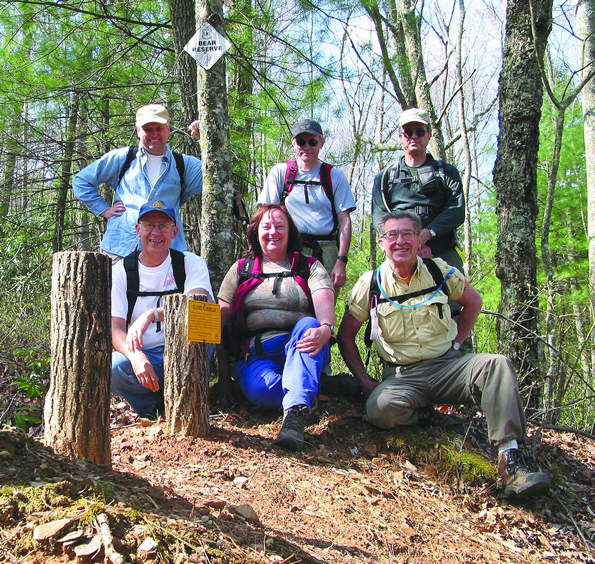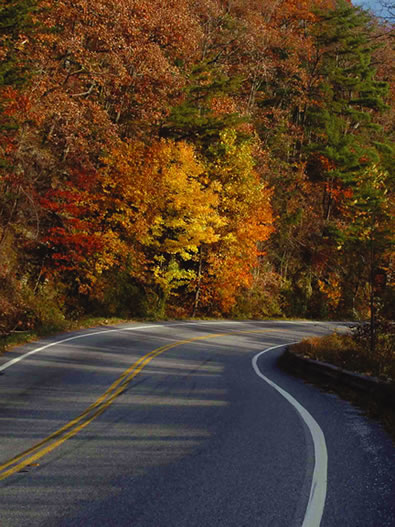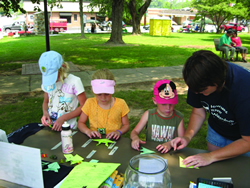Biking And Walking: Our Secret Weapon?
by Neal Peirce
More fitness. America's obesity epidemic curbed. Less gasoline burned, fewer carbon emissions. Safer streets. Improved access to public transit.
Those are just some of the reasons why biking and walking proponents say it's time for the federal government to focus less on new and expanded highways, and far more on safe pathways and "complete streets" for our towns and cities.
Right now there's a shadow over all transportation funding as gas taxes diminish, the Highway Trust Fund sputters on empty, and reauthorization of the overall federal support program almost assuredly faces a year's postponement.
But maybe the pause is time to debate: Why shouldn't we seriously consider federal support for sidewalk widenings and new pathways for city dwellers and suburbanites?
Congressional Republicans seem to have few doubts about the answer. House Minority Leader John Boehner of Ohio and GOP Whip Eric Cantor of Virginia have joked about the government's existing $833 million a year for pedestrian and bike facilities and protecting historic neighborhoods. They'd ax the program altogether.
But even when Republicans firmly held Congress, the House in 2003 voted overwhelmingly, 327-90, to keep the transportation enhancements program in place. Today, arguably, the case is even more compelling.
A top new argument: obesity. A stunning 34 percent of adult Americans are currently obese, another 32 percent clearly overweight, according to the Centers for Disease Control and Prevention. Excessive weight now causes more deaths than smoking. If the fat crisis can't be dealt with, rising levels of heart disease and diabetes will assuredly swamp the nation's efforts to reduce spiraling health costs.
What's the answer? Yes, diet. But more physical activity, too. We've allowed autos to carry us everywhere, even walkable distances of less than a mile (and even, in many cases, to the gym). Our bodies fatten inexorably. One estimate of the country's annual medical bill for physical inactivity: $117 billion.
Children are a chief concern. In 1969, 50 percent walked to school; by 2004 the figure was down to 14 percent. It's the same reason why so many adults fail to enjoy the low-impact, weight-trimming exercise of close-to-home walking or biking: local planning that provides thin if nonexistent sidewalks, dangerous-to-cross highways, and sprawling development.
Walkers, bikers and public health advocates have embraced the existing federal transportation enhancements program as a start at sparing us a 100-percent asphalt future. But spread nationwide, the program's yearly outlay is thin — just a quarter more than a single $676 million highway cloverleaf in Virginia, for example.
It's time, argues Keith Laughlin, president of the Rails-to-Trails Conservancy (www.railstotrails.org), for a mega-federal step forward — toward "active transportation." What would that mean? Walking and biking accepted as legitimate, viable and healthy transportation modes, worthy of priority federal support.
Cities that have already invested seriously in that direction are demonstrating solid results, Laughlin claims. The lead example: Portland, Ore., where $57 million has been spent on a 300-mile bikeway/pedestrian network since 1991. Portland bicycling has lately increased 15 percent to 20 percent a year, and another $100 million in trail investment is planned. By 2040, Rails to Trails calculates, Portland's net benefit from better health and reduced fuel savings will be $1.2 billion, an eye-catching 8-1 return-on-investment ratio.
Could such gains be mirrored nationally? Up to 100 communities, 10 states included, have at least endorsed "complete streets" approaches (www.completestreets.org). And the last federal transportation reauthorization did include a pilot program encouraging four communities — provided with $25 million each — to devise their own programs to encourage "mode shifts" to walking and biking. Columbia, Mo., Sheboygan County, Wis., Minneapolis, and Marin County, Calif., were selected for the program, which Rails to Trails administers for the government.
Rails to Trails says the pilots are doing well and it's time to expand to 50 more cities, funded at $50 million each, across the country. That would cost $2.5 billion. Rep. James Oberstar, the House Transportation Committee chair who authored the pilot program in 2003, is holding back, apparently seeking more conclusive evidence.
What's indisputable is that several cities — among them Cleveland, San Diego, Altoona, Pa., Billings, Mont., and Madison, Wis. — are straining at the bit, working with trail advocacy groups to appeal for significant federal support to mount full-bore walking/biking plans and construction.
Their case is strong. We've had a near-century of overwhelming federal funding preference for the automobile. Rails to Trails calculates that a nationwide promotion of biking and walking for short trips could cut from 70 billion to 200 billion miles off what Americans drive yearly. We'd reduce our oil consumption and greenhouse gas emissions by at least 3 percent, and with luck as much as 8 percent.
Then also consider the dramatic health gains possible from more active, less sedentary lifestyles. It turns out that major walking and biking efforts aren't some joke, or just an interesting idea. They're imperative.
Neal Peirce's e-mail address is nrp@citistates.com.
© 2009, The Washington Post Writers Group
The opinions expressed in this column are not necessarily those of the National League of Cities or Nation's Cities Weekly.Post Writers Group
Thursday, July 30, 2009
Biking & Walking: Out Secret Weapon?
FW: WaysSouth Summer Newsletter
From: Dennis Desmond [mailto:DDesmond@ltlt.org]
Sent: Monday, July 27, 2009 9:35 AM
To: sales@smokymtnbikes.com
Subject: FW: WaysSouth Summer Newsletter
Attention Bikers and Bicycle Riders
By: Richard St. John
Volunteers are needed to reach out to this huge two-wheel community about WaysSouth. If we can show bikers what we are fighting for and why, they will understand how vital it is for them to have their voices heard. Read more...
Dennis Desmond, LTLT
From: WaysSouth [mailto:WaysSouth@mail.vresp.com]
Sent: Sunday, July 26, 2009 12:15 PM
To: Dennis Desmond
Subject: WaysSouth Summer Newsletter
|
Click here to read the Summer Newsletter with full text and pictures at our website. |
|
|
| Through its Stop I-3 project, WaysSouth continues to work with our contact at the Federal Highway Administration. The administration says that the study is now a "top priority." The money is still available and will remain so unless rescinded. Many thanks to those of you who responded to our action alert and wrote to Dr. Orszag in the Office of Management and Budget asking for the money to be rescinded. If you have not had a chance to write, click here for more background and instructions. In our Corridor K North Carolina project, we are continuing to raise awareness in Graham County, N.C., about the advantages of alternative transportation improvements to Highway 74, which do not involve a new interstate grade four-lane road that ruins the magnificent vistas of this part of Western North Carolina and interferes with the quiet and solitude of the Appalachian Trail. As proposed in the draft study, the 10-mile $378 million segment would require a half-mile tunnel and would not shorten travel time as compared to existing routes. Click here to read the letter that WaysSouth, along with 16 other organizations, wrote to the North Carolina Department of Transportation requesting public input sessions. We currently anticipate two sessions (Robbinsville and Sylva) in late 2009 or early 2010. Read more... |
| Keeping Fuel In the Tank By: Lucy E. Bartlett, Chair, WaysSouth Board of Directors |
|
|
| In This Issue: | New WaysSouth Director Betty Petty |
| Betty Petty Puts Passion in Action |
|
|
| Chattanooga Hiking Club - top left to right- Steve Barnes, Ralph Van Pelt,Doug Cooper, bottom left to right, Ken Jones, Betty Petty, Donald Box |
| Profile of a New WaysSouth Director Betty Petty is passionate about hiking the Tennessee mountains and doesn't hesitate to put her passion into action to protect those mountains. Although she is one of the newest directors on the WaysSouth Board, Petty comes as a seasoned grassroots activist. She is deeply involved in citizen efforts to ensure that wise and rational decisions are made in planning routes for the Corridor K highway through Tennessee. Read more... |
|
|
|
WaysSouth is pleased to announce the
Another exciting tool has been added to WaysSouth's outreach arsenal – Facebook! You can become a Facebook "fan" of WaysSouth or make donations securely through our new |
|
|
|
|
| Hiwassee River Watershed Coalition is the newest organization to join WaysSouth's cadre of supporting organizations, adding to our toolbelt of skills, contacts and capacity to promote responsible transportation in Southern Appalachia. A local conservation nonprofit, this coalition's mission is to facilitate water quality improvements in lakes and streams throughout the upper Hiwassee River watershed within North Carolina's Cherokee and Clay counties and Georgia's Towns and Union counties. Read more... |
| A Tale of Two Partnerships |
|
|
| Every six years, Congress sets the country's transportation and infrastructure priorities — allocating hundreds of billions of dollars for projects that shape our communities for generations. The implications of the federal transportation bill, from the priorities set to specific earmarks, have a profound effect on Southern Appalachia. Interstate 3 was an earmark in the 2005 bill. Read more... |
| "So what's all the excitement The issues that join WaysSouth and Corridor K at the hip stir emotions and may appear complex. Volunteer Wally Editor |
Attention Bikers and Bicycle Riders Volunteers are needed to reach out to this huge two-wheel community about WaysSouth. If we can show bikers what we are fighting for and why, they will understand how vital it is for them to have their voices heard. Read more... |
| | |
| Romancing for Volunteers | |
| As you know, WaysSouth depends on your donations to do our work – without your support, we cannot function. Your gift, however, does not have to be money; time is also important. | |
| | |
| Putting Freight Back on Track By: Grace Trimble, WaysSouth Board of Directors | |
| What role does rail play in developing sustainable and responsible transportation solutions for the Southern Appalachians? That is the question that some 10 volunteers for WaysSouth are working to answer. Led by Bob Grove of Brasstown, N.C., who also serves on the Corridor K task force, WaysSouth's rail task force has spent the past year developing a scope of work and conducting research to determine whether improved rail infrastructure using existing rights of way might take the place of a new four-lane highway through the mountains that would destroy thousands of acres of national forest. Read more... |
| If you no longer wish to receive these emails, please reply to this message with "Unsubscribe" in the subject line or simply click on the following link: Unsubscribe |
| WaysSouth Read the VerticalResponse marketing policy. |

Monday, July 27, 2009
Weekly Group Rides
Monday, July 20, 2009
Weekly Group Rides
Monday, July 13, 2009
Weekly Group Rides & Calling all LADIES!
Stay on Hwy 175, pass Lee's Country Store on the right (slow down here)
Turn right on Jackrabbit Road (USFS sign at this entrance)
Go approximately 1/2 mile, turn left just past the Philadelphia Baptist Church into parking lot!















